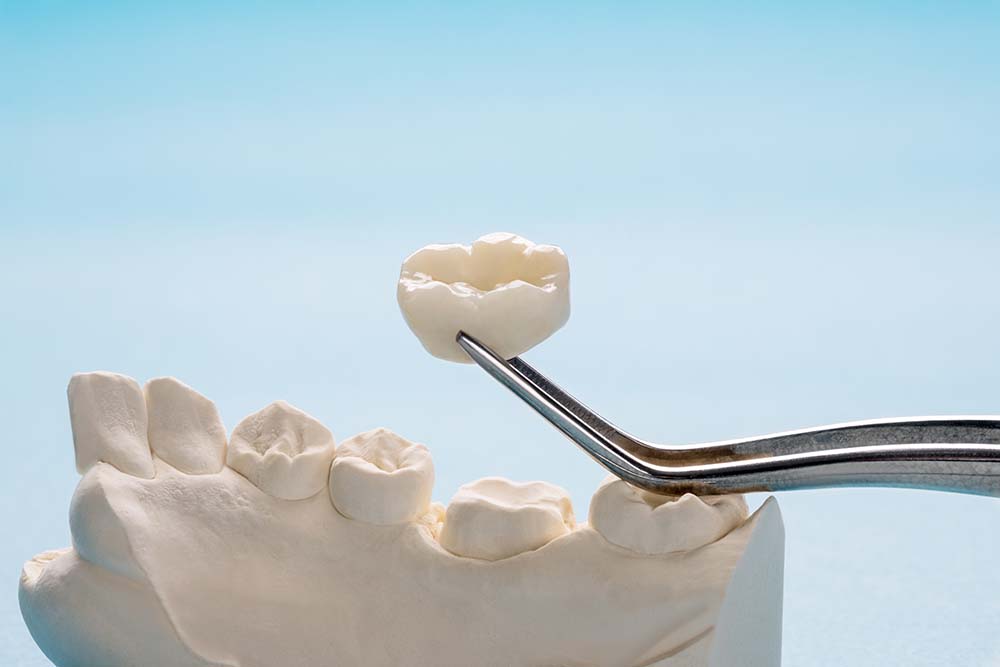This is a non-removable cap placed on a damaged or severely chipped tooth. It is made from zirconium dioxide (ZrO2), which falls under the category of ceramic materials. It restores the shape and function of the tooth and provides protection against cavities. To achieve impeccable aesthetics, zirconia crowns are coated with a layer of feldspathic porcelain.
For the restoration of a single tooth, a single crown is used. To replace 2-4 consecutive missing teeth, a bridge is placed – an orthopedic structure consisting of interconnected crowns.
When a front or molar tooth is damaged by 50% or more, and filling is not an effective solution, the placement of a single zirconia crown is recommended.
For minor tooth damage (small chips, cracks), porcelain veneers can be placed.

When do you need Zirconia dental crowns?
Here are several situations in which it is recommended to have a zirconia crown:
- A broken or chipped tooth with more than 50% of the crown portion damaged.
- A large filling where the tooth’s walls are compromised, and the filling has shrunk.
- Absence of the nerve. A depulped tooth is more fragile, and a crown reduces the risk of chipping or fracturing.
Depending on the clinical presentation, the dentist will suggest the best option for restoring the damaged tooth, either a zirconia crown or a porcelain crown.

What is the process of Zirconia crown placement?
1. Diagnosis
The doctor conducts computer tomography to assess the condition of the teeth and identify any hidden issues. They then perform electromyography and electrosongraphy to evaluate the proper functioning of facial muscles and the temporomandibular joint. Any deviations from normal jaw closure are identified. After analyzing the clinical picture, a treatment plan is developed.
2. Tooth Therapy
Before crown placement, the tooth is treated for decay or pulpitis. Root canal treatment is performed if necessary.
3. Preparation
Local anesthesia is administered. The enamel layer is gently reshaped to the thickness of the crown, ensuring the patient experiences no pain. Impressions are taken and sent to the dental laboratory for crown fabrication. A temporary plastic crown is placed while the zirconia crown is being crafted.
4. Fitting
The crown is placed onto the tooth. Using a dental microscope at 40x magnification, the accuracy of the crown’s fit to the tooth is verified. The patient is asked about any discomfort, and if needed, the crown is sent back to the laboratory for adjustments.
5. Crown Fixation
The crown is securely attached using dental cement.
FAQ
Are zirconia crowns better than porcelain?
The choice between porcelain and zirconia crowns is made by the dentist based on the clinical situation. Zirconia crowns do not lag behind porcelain in terms of aesthetics and are slightly superior in strength. For example, in cases of bruxism, a dentist may opt for zirconia crowns.
How long does a zirconia crown last?
Depending on the quality of the material, the accuracy of fit to the tooth, and oral hygiene care, zirconia crowns can last from 15 to 25 years.
Do zirconia crowns cost more than porcelain ones?
No, in our clinic, the cost of both zirconia and porcelain crowns is the same.

